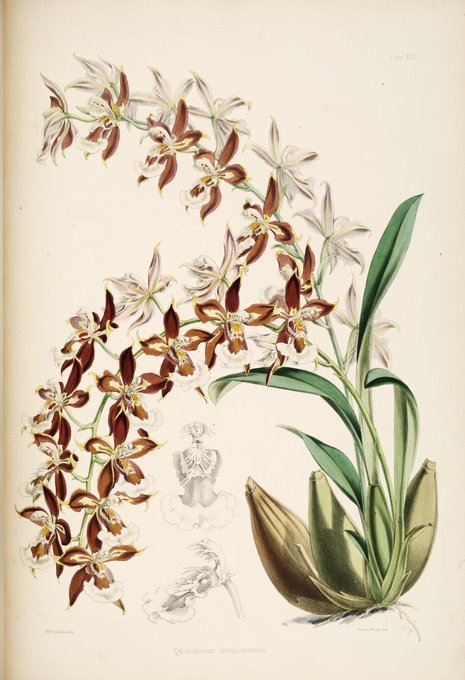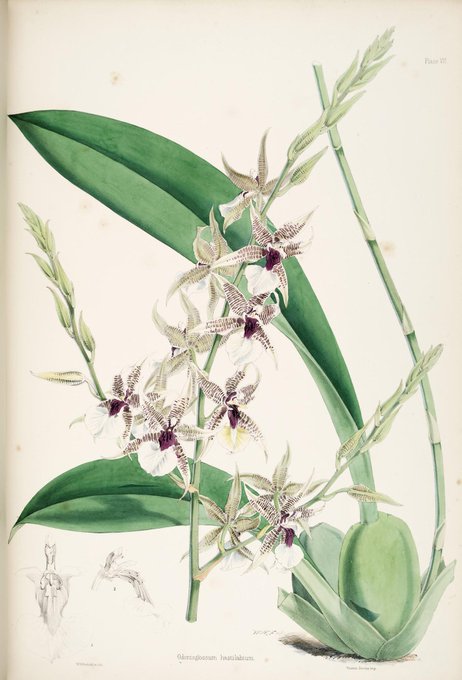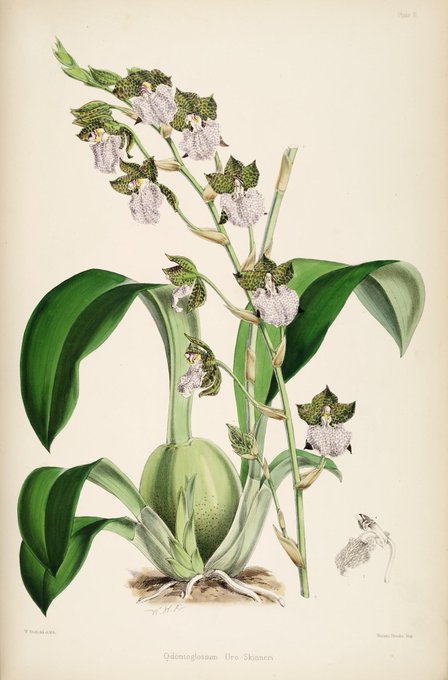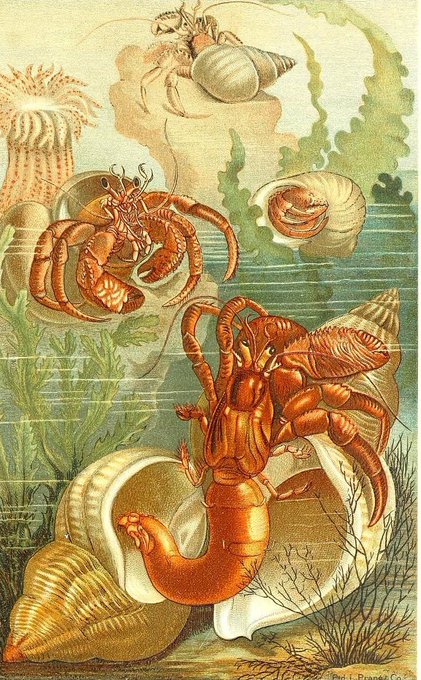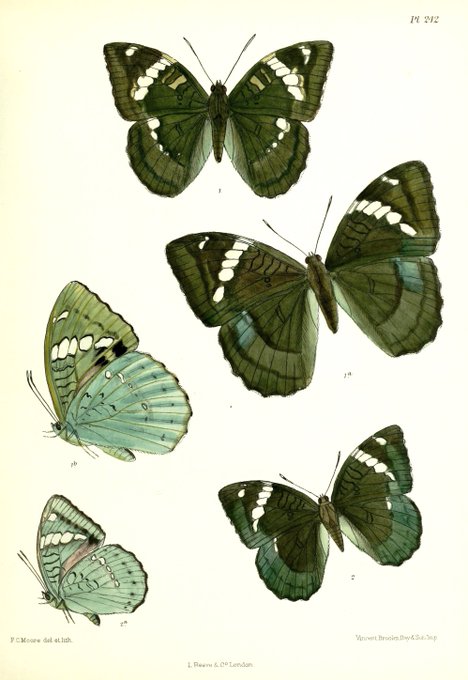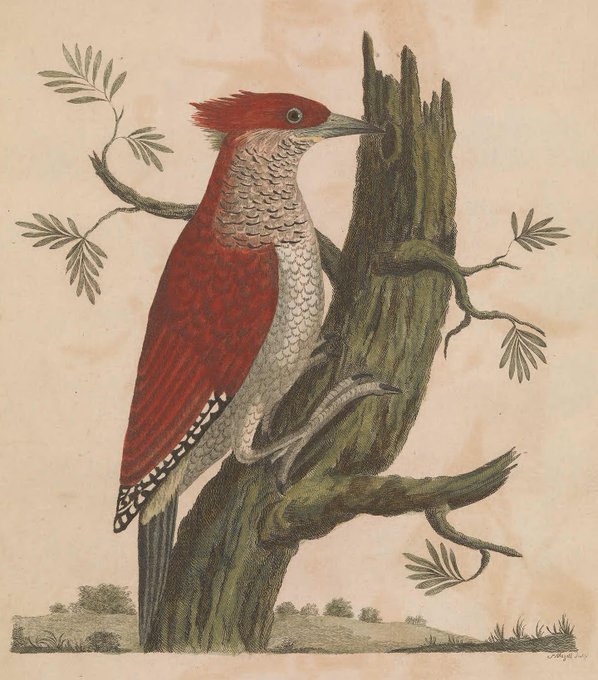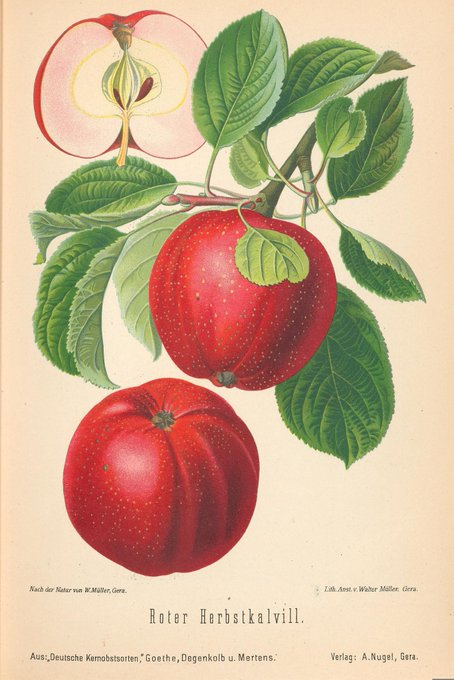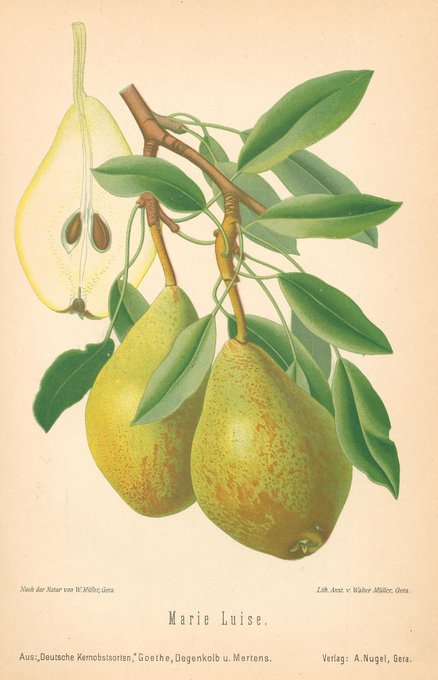BHLibのTwitterイラスト検索結果。 357 件中 7ページ目
#BotanicMonday + #NationalRoseMonth! The Persian yellow rose (Rosa foetida) is native to the foothills of the Caucasus Mountains in Georgia. #SciArt by Sydenham Teast Edwards for "The Botanical Magazine", v. 11 (1797), in #BHLib via @mobotgarden ➡️ https://t.co/woVvQZpvzk 🌹
The Thistle Act of 1890 required the eradication of invasive thistle species from Victoria, Australia. "Illustrated Description of Thistles, etc." (1893) was meant as a guide to help landowners identify such thistles. In #BHLib via @bhl_au @RBG_Victoria: https://t.co/HzwwEgcdoo
Happy #WildflowerWednesday! Edward Step's "Wayside and Woodland Blossoms" (1895) was intended as a pocket guide to British wildflowers for non-scientific audiences. Explore it in #BHLib thanks to @uoftlibraries Robarts Library ➡️ https://t.co/gza6YjzKP1 🌸🌼🌸
It's #BotanicMonday! James Bateman was one of the first to advocate for "cool" orchid cultivation, which enabled Odontoglossum orchids to be cultivated in England. Explore his "A monograph of Odontoglossum" (1874) in #BHLib via @mobotgarden ➡️ https://t.co/S8pnnZ0heR
Irises come in a rainbow of colors. "The Genus Iris" (1913) by William Rickatson Dykes highlights many of these, with #SciArt based almost exclusively from plants growing in the author's own garden. Explore it in #BHLib thanks to @NYBG ➡️ https://t.co/4Wvzt0eKOj
One of my favourite things on #BHLib is this hand-written, largely hand-illustrated manuscript by Stephen West Williams and Harriet Goodhue. Check it out here on @BioDivLibrary: https://t.co/yJ7tKcOvDS via @HarvardLibrary! #BotanicMonday #BotanicalIllustration #HistSciArt
Moths: rose anthelid (Chenuala heliaspis) & variable anthelid (Anthela varia). #SciArt by Harriet Scott for "Australian Lepidoptera and Their Transformations", Vol. 2 (1890-98), authored by Alexander Walker Scott. In #BHLib via @bhl_au @austmus ➡️ https://t.co/taW1eDF4Nc 🐛🦋
The Botany Libraries of @HarvardLibrary recently digitized a beautiful volume of original orchid paintings by João Barbosa Rodrigues: "Iconographie des orchidées du Brésil". Explore the #SciArt, signed and dated from 1869 through 1888, in #BHLib ➡️ https://t.co/AoaKrN48zk
"Our Living World; An Artistic Edition" (1885) featured chromolithographs by the renowned firm of Louis Prang. Prang is sometimes called "father of the American Christmas card". Explore the work in #BHLib thanks to @IllinoisLibrary ➡️ https://t.co/zgJL1fXcTu #SciArt
Wishing you a fin-tastic #FishyFriday! "Histoire Naturelle des Poissons" (1828-1849) by Cuvier & Valenciennes attempted to catalog all known #fish. The 22 volumes treated over 4,500 species. Explore the work in #BHLib thanks to @mayrlibrary ➡️ https://t.co/woPoIxmpWC 🐠🐡🐟
Enjoy botanical #SciArt for #FloraFriday! "Icones plantarum rariorum Horti Regii Botanici Berolinensis" (1840-44) illustrated & described new or little-known plants grown at the Berlin Botanic Gardens. This #RareBook is available in #BHLib via @Kew_LAA: https://t.co/mgOBg2ew90
"What bird is that? A Guide to the Birds of Australia" (1931) promised that "all who so desire may become intimately acquainted with the many and beautiful native birds that throng our bushland". In #BHLib via @museumsvictoria @bhl_au ➡️ https://t.co/CaD5B1w2pR #Feathursday
"Tabulae phytographicae" (1795-1804) explained the Linnaean system of plant classification through a series of instructional #SciArt depicting the relationships between various plants that shared the same classification. Explore it in #BHLib via @NYBG: https://t.co/JRyG5tkgss
Martyn's "Historia plantarum rariorum" (1728-[1737]) was the first flower book to be printed in color. The #Sciart was engraved by Elisha Kirkall after paintings by van Huysum, Houstoun, Massey, Sartorys & Sartorius. In #BHLib via @NYBG: https://t.co/RouxVhLbqr #BotanicMonday
The #SciArt in "Guia practica para os principiantes colleccionadores de Insectos" (1896) is perfect for coloring! #ColorOurCollections today! https://t.co/bcoRRSRmlQ
Book contributed in #BHLib by @NHM_Library. Find downloading instructions here ➡️ https://t.co/ltb09m0SJm
Happy #ArborDay! The European Oak Tree (Quercus robur) is native to most of Europe west of the Caucasus. #SciArt from J. Sturm's "Flora von Deutschland", Bd. 4 (1905) by K.G. Lutz. Contributed in #BHLib by @Kew_LAA ➡️ https://t.co/z5YMCW6yFt #GoodThingsComeInTrees 🌳🍃
These green butterflies remind of us of the importance of being green on this #EarthDay! #SciArt by Frederic C. Moore for his "Lepidoptera Indica", Vol. 3 (1896-99). Contributed in #BHLib by the @IllinoisLibrary ➡️ https://t.co/AVRzRFTAyU #EarthOptimism 🌏🦋
The northern tamandua (Tamandua mexicana) uses its long tongue to pick up ants and termites, and, like other anteaters, has no teeth. #SciArt from "Manual para el rastreo de mamíferos silvestres de México" (2012) by J.M.A. Sánchez, in #BHLib via @Conabio: https://t.co/6KqzFN2n1d
The 12 plates in Thomas Pennant's "Indian Zoology" (1769) were engraved by Peter Mazell from #SciArt provided by Gideon Loten, once governor of Ceylon. The original drawings were later lost in a shipwreck. Explore this #RareBook in #BHLib via @SILibraries: https://t.co/oXQb7YyAH4
"Äpfel und Birnen" (1894) described 53 varieties of apples & 51 types of pears. It includes 104 chromolithographs by Walter Müller depicting the whole fruit with branch & leaves and a cross-section. In #BHLib via @Mann_Library @Cornell_Library: https://t.co/tZQ7YAtU8s 🍎🍐









